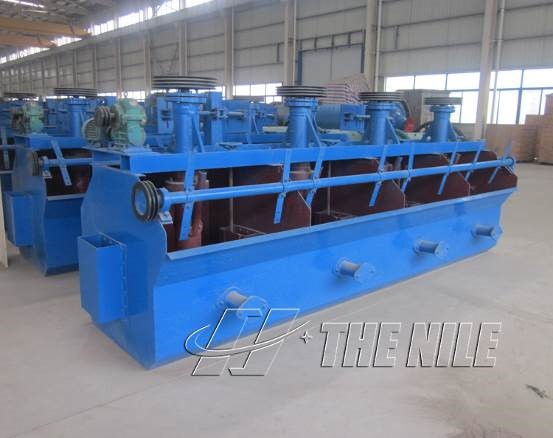Common purification methods of kaolin
Kaolin, also known as dolomite, is a clay mineral commonly found in nature. Kaolin is a useful mineral for making white pigments, and whiteness is the main performance parameter that affects the value of kaolin. The kaolin clay often contains harmful impurities such as iron, organic matter, dark substances, etc. These harmful impurities will make the kaolin clay show different colors and affect its whiteness. Therefore, impurities must be removed before using kaolin.
Common methods for purification of kaolin include gravity separation, magnetic separation, flotation, and chemical treatment. Below, this article will introduce the flotation and chemical treatment of kaolin:
1. Kaolin flotation
The flotation method is mainly to use the physical and chemical properties of the surface between gangue minerals and kaolin to treat raw kaolin with more impurities and lower whiteness, to remove its iron, titanium and carbon impurities, in order to achieve the low-grade kaolin Comprehensive utilization of resources.
Kaolin is a typical clay mineral. Impurity minerals such as iron and titanium are often embedded between kaolin particles. Therefore, the original ore must be ground to a certain fineness. The particle size is mostly the mud-level particles mentioned in the flotation process. The commonly used flotation methods of kaolin are ultrafine particle flotation, double liquid layer flotation and selective flocculation flotation.
The flotation method can effectively improve the whiteness of kaolin, but its disadvantage is that it requires the addition of chemical agents, resulting in increased production costs and easy environmental pollution.
2. Kaolin chemical treatment
Chemical leaching: Some impurities in kaolin can be selectively dissolved by sulfuric acid, hydrochloric acid, nitric acid and other leaching agents to remove impurities. This method can be used to remove hematite, limonite, siderite, etc. from low-grade kaolin.
Chemical bleaching: The impurities in kaolin can be oxidized into solubles by bleaching, and then washed and removed to improve the whiteness of kaolin products. However, the cost of chemical bleaching is relatively high, and it is usually used for kaolin concentrate that needs to be further purified after impurity removal.
Roasting and purification: The magnetization roasting, high temperature roasting or chlorination roasting can be used to remove the iron-containing impurities, carbon-containing impurities, sulfides, etc. in the kaolin by taking advantage of the difference in chemical composition and reactivity between the impurities and kaolin Impurities. This method can improve the chemical reaction activity of the calcined product, greatly improve the whiteness of kaolin, and obtain high-grade kaolin products. However, the disadvantage of roasting and purification is that it consumes a lot of energy and easily causes environmental pollution.
It is difficult to obtain high-grade kaolin products through a single process. Therefore, in actual production, it is recommended that all mine owners choose a qualified beneficiation manufacturer to conduct beneficiation tests and use a combination of multiple processes to improve the quality of kaolin products. .




